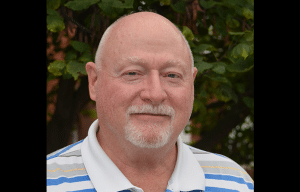Scour hole fix brings relief, but not long-term safety
By JOSH RODENBERG
Crews are finally filling the scour hole that has been creeping toward the Stringtown levee for years. It is the right move and it significantly reduces the immediate danger. But it is also the bare minimum fix, and it does not change the long-term risk facing the Bottoms.
For years, residents have been watching a deep, fast-growing erosion pit cut closer to the levee toe. By this fall, it was more than fifteen feet deep, hundreds of feet long, and dangerously close to the riverside slope. If the hole had reached the toe, we would be talking about slope instability, slumping, and a very real chance of breach. That scenario has been a quiet source of anxiety for many people in the Bottoms. The repair now underway gives everyone room to breathe, but it is not the whole story.
At the emergency town hall this fall, the U.S. Army Corps of Engineers and the county engineer outlined a four-step plan, and the work being done now follows it precisely. Crews are removing the remaining “legacy levee” material from the 1800s that contributed to the turbulent flow. They are using that material, along with sand and clay already washed out of the hole, to backfill the scour pit. A thin clay blanket is being added on top to help control underseepage. The site will be reseeded with vegetation to stabilize the surface over time.
That is the full scope of the fix. There is no rock armoring, no concrete revetment, no redesigned cross-section, and no toe reinforcement. It is a fast, efficient, thirty-day emergency repair costing about $400,000, far cheaper than the multi-million-dollar estimates that involved hauling in thousands of tons of rock. That lower cost is one reason the fix is happening now instead of years from now. Residents should welcome this, because it reduces the immediate threat and slows both underseepage and slope erosion. But it does not make the levee system resilient for the next flood cycle.
The core risks identified in the Corps materials—underseepage, piping, and slope instability—remain long-term challenges. Backfilling stops today’s danger, but it does not provide structural protection when the river reaches higher stages or when flood pressures rise. This pattern is familiar to many in the Bottoms: the system responds only when a specific problem becomes critical. The larger structural issue, an aging levee maintained by a district with a very limited budget, remains unaddressed. The fix at the scour hole is necessary, but it is not a comprehensive solution.
There is a broader proposal intended to move beyond emergency patches. State Rep. David Friess introduced HB 4146, a bill that would require the state to develop a full, engineered plan for strengthening and modernizing the Stringtown levee system. It would shift the conversation from “fix the hole in front of us” to “reinforce the entire system before the next failure.” But HB 4146 stalled in committee earlier this year. Nothing can advance until the legislature reconvenes in January. If residents want long-term protection, following the progress of HB 4146 and encouraging movement on it may matter as much as the repair work happening now.
Residents who want to follow HB 4146 more closely can contact Rep. David Friess’s office for updates when the legislature reconvenes in January. Local infrastructure bills often move only when communities show sustained interest, and constituent questions help keep regional issues visible in Springfield. Rep. Friess can be reached at friess@ilhousegop.org, at his Red Bud district office at (618) 282-7284, or at his Springfield office at (217) 782-1018.
The repair deserves recognition. Local officials pushed. Engineers produced a workable plan. Crews mobilized quickly, and many people have been watching the situation closely. There is real relief in seeing action finally taken. But the community also knows how quickly the river can undo temporary fixes.
To move forward wisely, we will need clear follow-up monitoring, including compaction, settlement, and seepage checks shared publicly after spring river stages. We will need transparency about long-term engineering needs, because residents deserve to know which parts of the levee system remain vulnerable. And we need a realistic funding and policy plan. Emergency work keeps us safe today. A modern levee plan is what will keep us safe tomorrow.
Many people are grateful that work is finally happening. But gratitude and vigilance can coexist. The Bottoms has seen what happens when attention fades. This repair is progress, not security, and the next steps will determine which future we get.
Josh Rodenberg is a Randolph County writer and long-time resident of the region. He has been closely following the Stringtown levee and scour-hole repair efforts.






